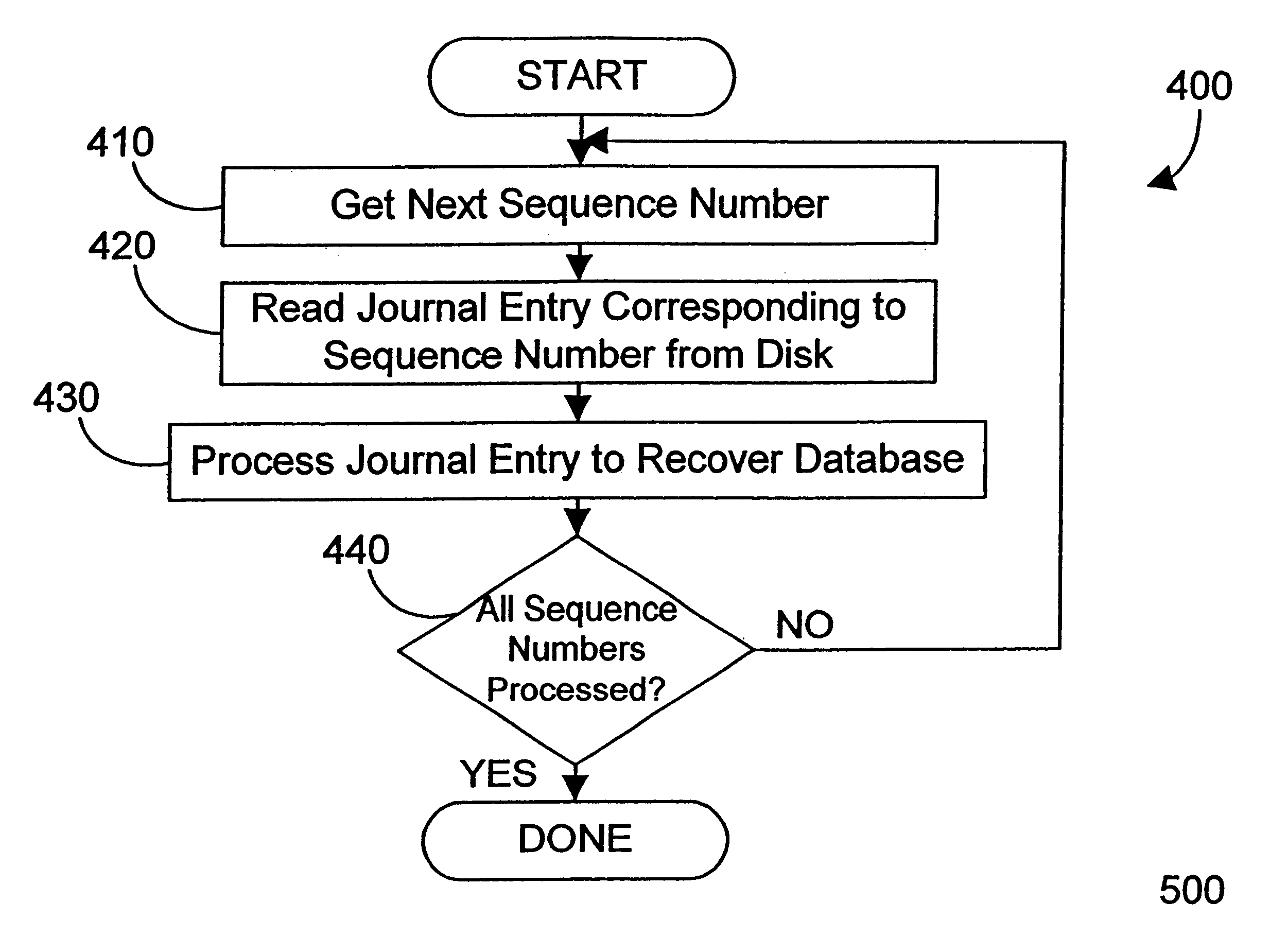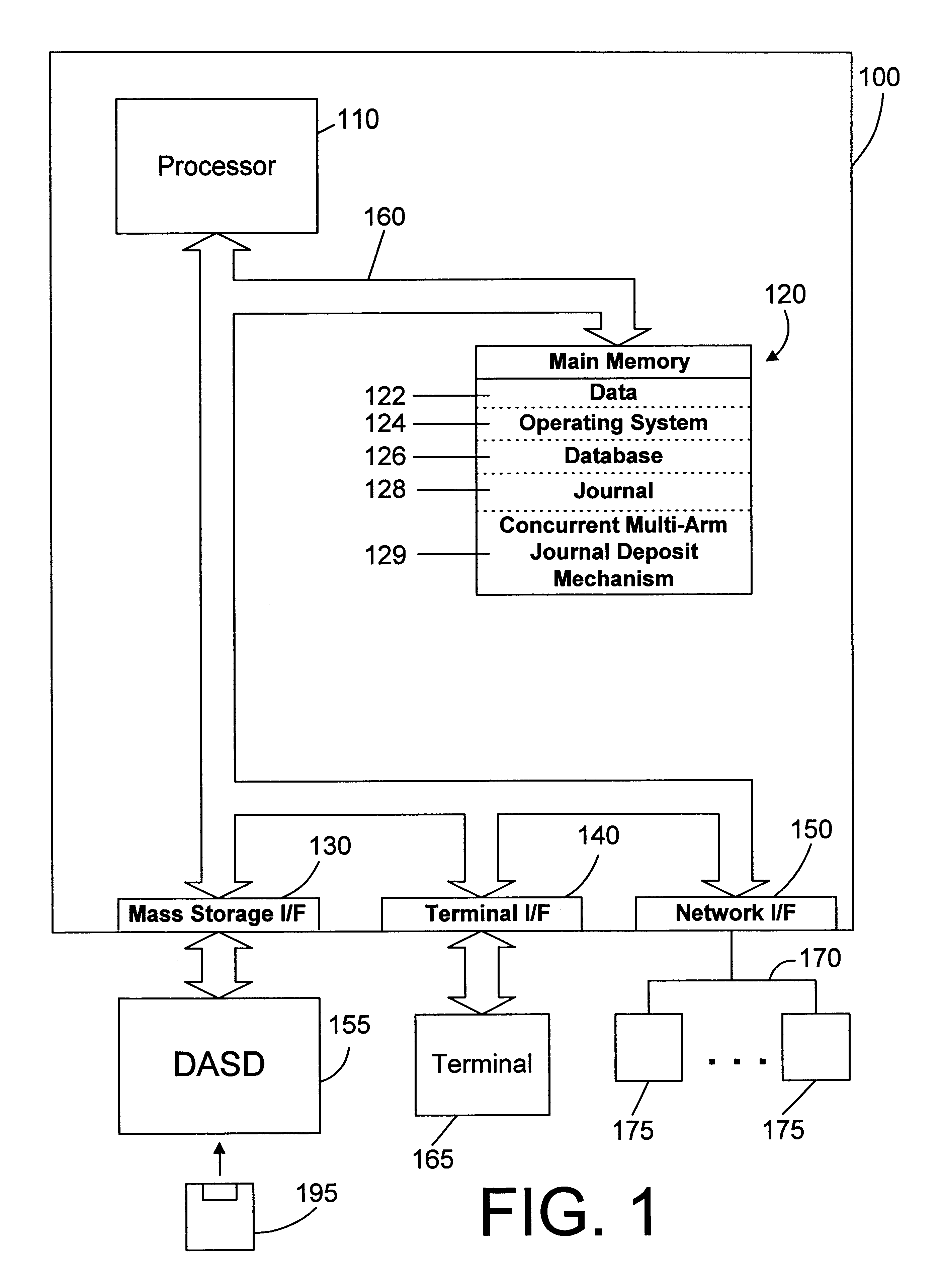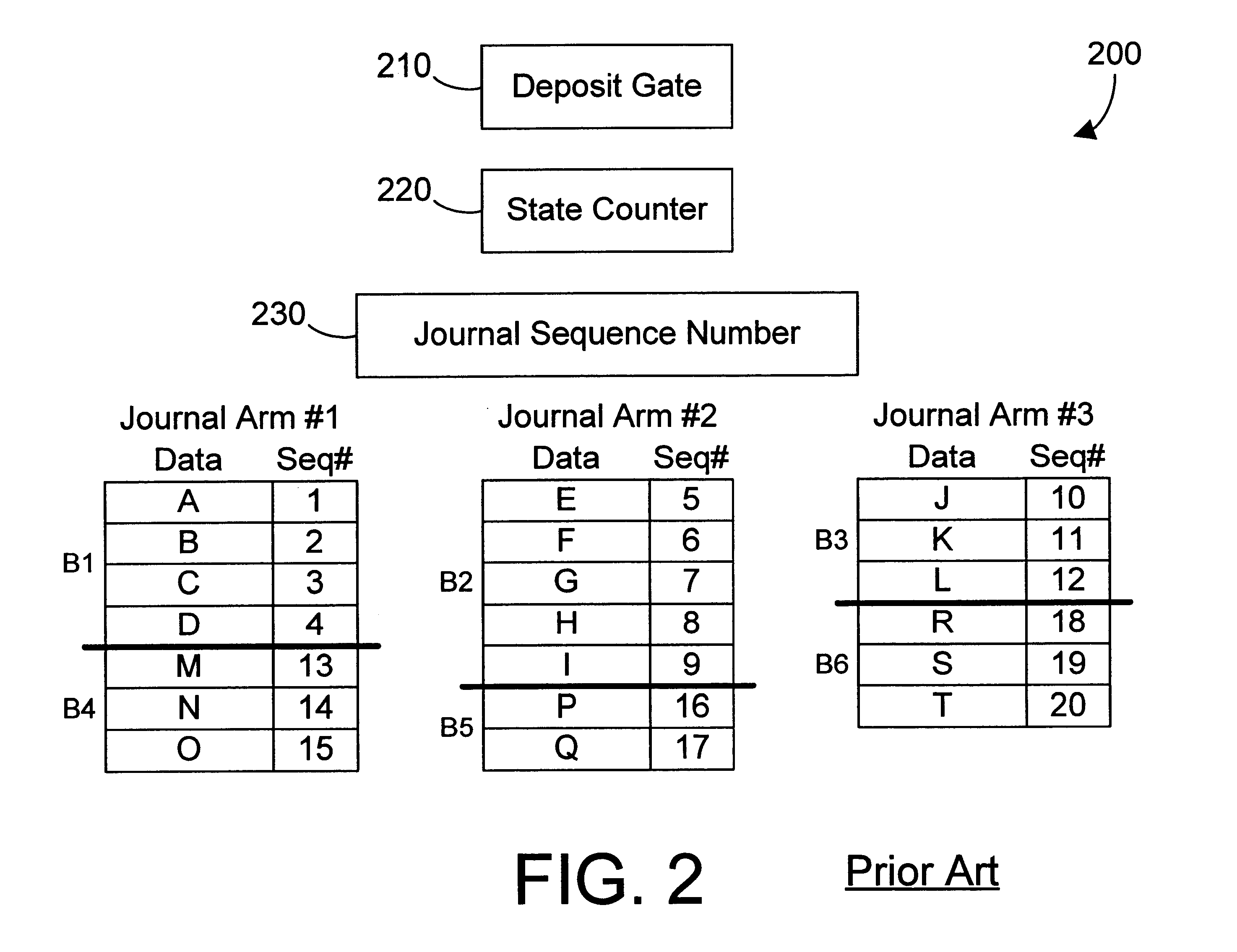Database journal mechanism and method that supports multiple simultaneous deposits
a database and mechanism technology, applied in the field of database computer systems, to achieve the effect of relieved contention, excellent scaling of journal functions, and good scaling
- Summary
- Abstract
- Description
- Claims
- Application Information
AI Technical Summary
Benefits of technology
Problems solved by technology
Method used
Image
Examples
first embodiment
The first embodiment recognizes that database record locks guarantee the time-order of interdependent entries in the journal. Consider the general sequence of operations, at a high level, that occur when a database record is updated when the database has a write-ahead journal: 1) a database record lock on the record to be changed is acquired; 2) index maintenance is performed, including the journaling of the "before image" of any changed index page; 3) the change is entered into the journal; 4) the change is made to the database record; and 5) the database record lock on the changed record is released. Note that the database record lock is held across the entire process, including the journaling step. This implies that the database serializes the journal deposit relative to this record change. Thus, if only this record were being updated, then no journal serialization would be necessary. Database locks would guarantee that all updates to this record appear on the journal in time-ord...
second embodiment
The second embodiment allows multiple journal deposit points while still maintaining physical time-ordering among journal entries. This is accomplished by having one deposit gate per journal arm and allowing multiple arms to participate in a journal bundle. A single journal arm can belong to, at most, one journal bundle. When an entry is made, it can go to any free arm that is already part of the current bundle or an adjacent free arm may be added to the bundle to house the entry. When the bundle is written to disk, all active arms for the bundle must write to disk. Thus, the ring of journal arms must be viewed as a ring of journal bundles where multiple arms are grouped together to form a bundle with multiple deposit points. The multiple gates per bundle helps scaling of the journaling system as the number of processors in a system increases.
Referring to FIG. 8, a journaling system 800 in accordance with the second embodiment maintains the correlation between time-order of the entr...
PUM
 Login to View More
Login to View More Abstract
Description
Claims
Application Information
 Login to View More
Login to View More - R&D
- Intellectual Property
- Life Sciences
- Materials
- Tech Scout
- Unparalleled Data Quality
- Higher Quality Content
- 60% Fewer Hallucinations
Browse by: Latest US Patents, China's latest patents, Technical Efficacy Thesaurus, Application Domain, Technology Topic, Popular Technical Reports.
© 2025 PatSnap. All rights reserved.Legal|Privacy policy|Modern Slavery Act Transparency Statement|Sitemap|About US| Contact US: help@patsnap.com



